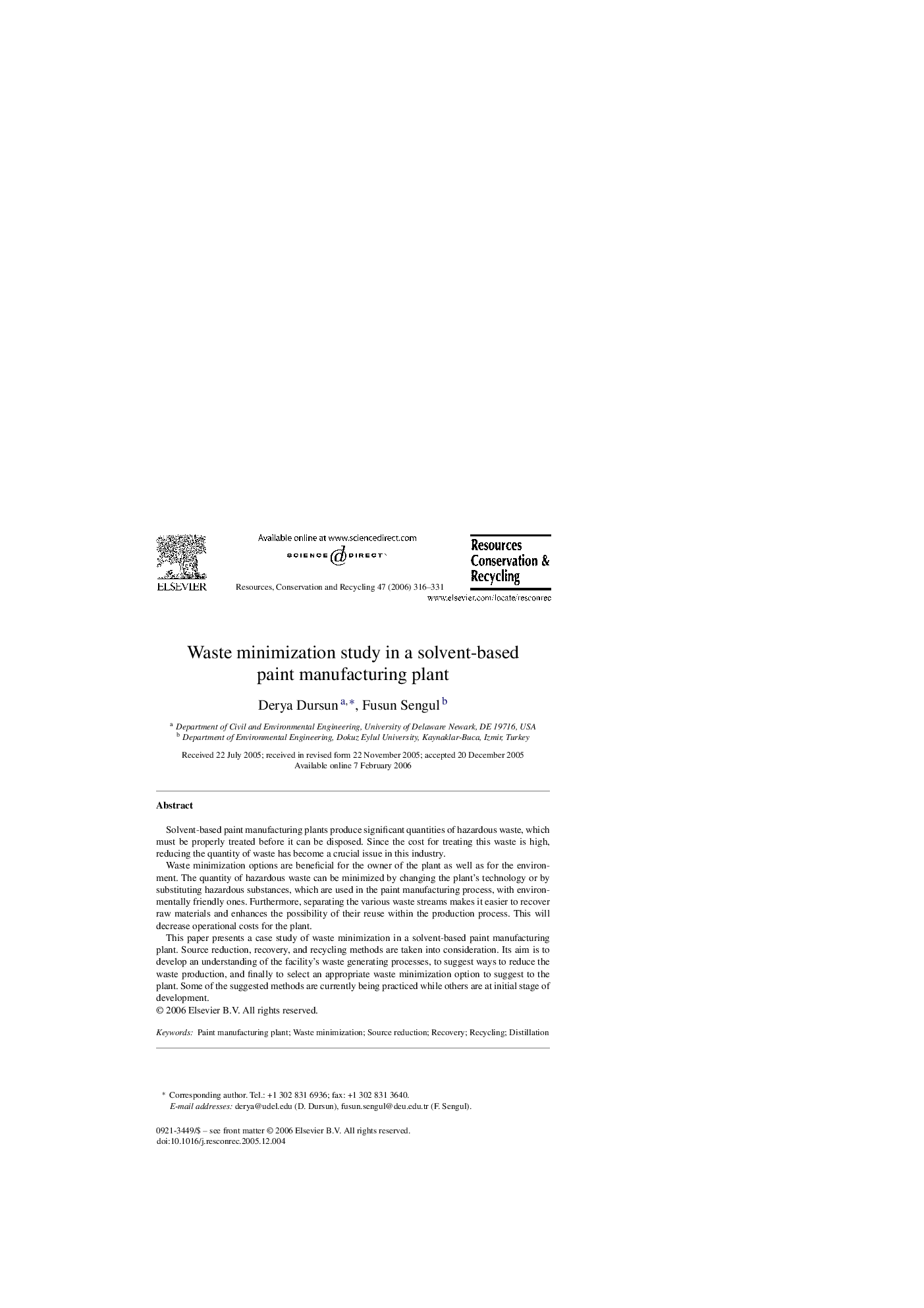| Article ID | Journal | Published Year | Pages | File Type |
|---|---|---|---|---|
| 1064292 | Resources, Conservation and Recycling | 2006 | 16 Pages |
Solvent-based paint manufacturing plants produce significant quantities of hazardous waste, which must be properly treated before it can be disposed. Since the cost for treating this waste is high, reducing the quantity of waste has become a crucial issue in this industry.Waste minimization options are beneficial for the owner of the plant as well as for the environment. The quantity of hazardous waste can be minimized by changing the plant's technology or by substituting hazardous substances, which are used in the paint manufacturing process, with environmentally friendly ones. Furthermore, separating the various waste streams makes it easier to recover raw materials and enhances the possibility of their reuse within the production process. This will decrease operational costs for the plant.This paper presents a case study of waste minimization in a solvent-based paint manufacturing plant. Source reduction, recovery, and recycling methods are taken into consideration. Its aim is to develop an understanding of the facility's waste generating processes, to suggest ways to reduce the waste production, and finally to select an appropriate waste minimization option to suggest to the plant. Some of the suggested methods are currently being practiced while others are at initial stage of development.
